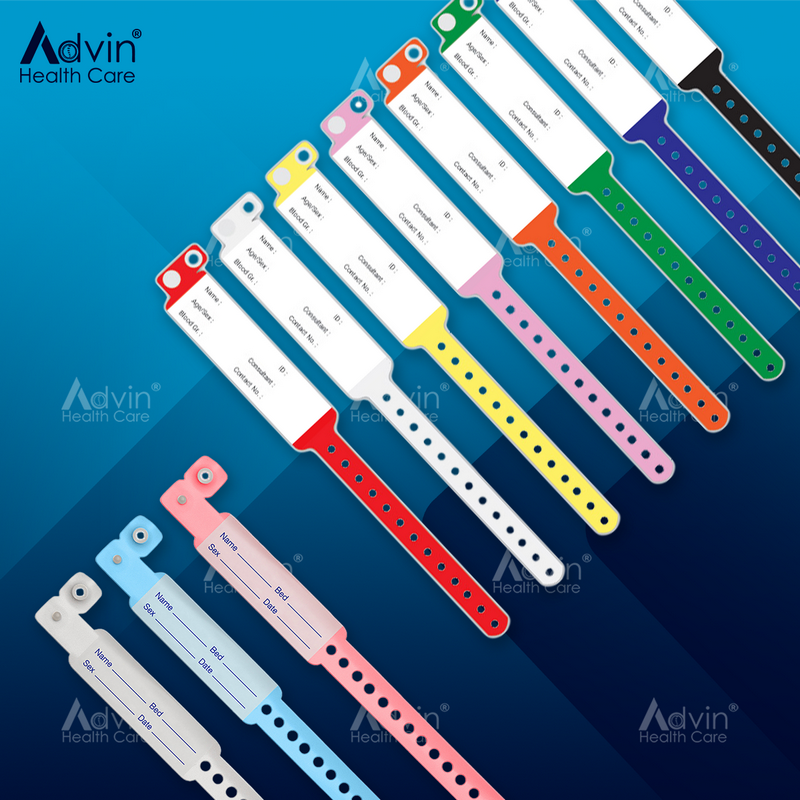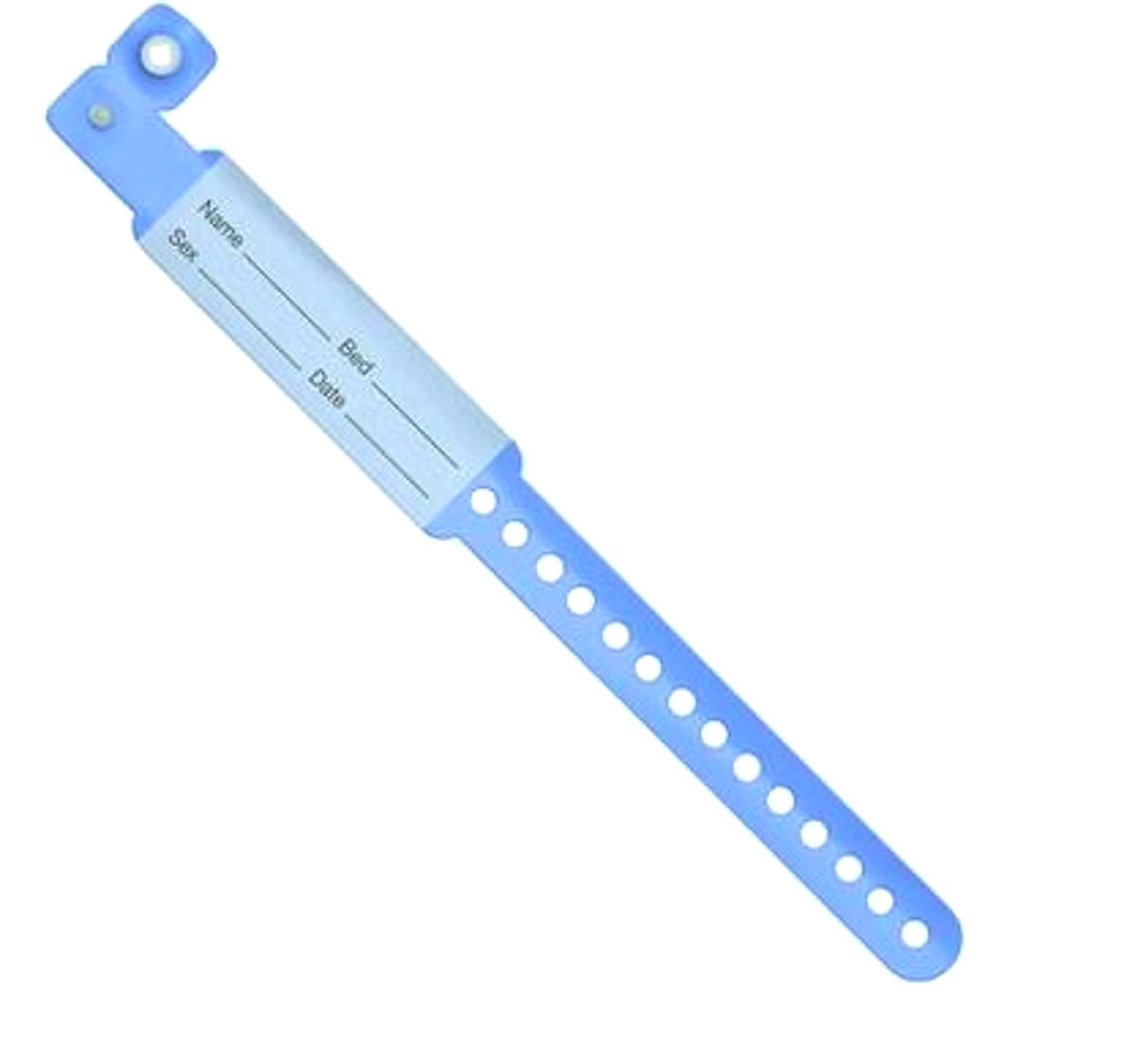Exploring the Numerous Sorts Of Patient Identification Band Used in Clinical Facilities
In the elaborate globe of healthcare, the vital role of Patient Identification bands frequently goes undetected. These bands, varying from straightforward paper wristbands to sophisticated RFID bands, form the foundation of Patient safety methods, ensuring precision in Patient Identification.
Comprehending the Importance of Patient Identification Bands
While they may look like mere devices, Patient Identification bands play an important role in clinical centers. These bands work as a vital device for verifying Patient identification, stopping clinical mistakes connected to misidentification. The bands commonly show crucial information such as the Patient's name, age, blood group, and any kind of known allergies. They enable medical care professionals to swiftly access this critical info, therefore facilitating exact and prompt clinical therapy. Patient Identification bands also aid in improving management jobs, making certain exact record-keeping and billing. Despite their simplicity, these bands symbolize the concept of Patient safety, a foundation of high quality healthcare. Without them, the danger of clinical mistakes, and consequently, Patient damage, could dramatically raise.
Conventional Paper Wristbands: Their Use and Limitations
Standard paper wristbands have been a staple in Patient Identification throughout different medical centers. While their usage is widespread, they nurture specific constraints that may impact their performance in Patient monitoring. This section will certainly focus on the scope of their application and the intrinsic drawbacks connected with their use.
Paper Wristbands: Use Scope
In the world of Patient Identification, paper wristbands have actually long held a vital function. These bands are typically utilized in outpatient settings, where the Patient's stay is short-lived. The wristbands consist of important details such as the Patient's name, day of birth, and an unique Identification number. This straightforward, yet efficient system, permits physician to quickly and properly identify individuals, ensuring the right therapy is administered. Paper wristbands are likewise used in emergency circumstances, where quick Identification is extremely important. Their usage includes events like blood donation drives and mass inoculation programs, better emphasizing their adaptability. Regardless of advancements in innovation, the modest paper wristband continues to be a reputable and cost-efficient option for Patient Identification in numerous medical care scenarios.
Limitations of Paper Wristbands
Despite their extensive usage, paper wristbands are not without their drawbacks. Their physical resilience is just one of the substantial constraints. Exposure to water, sweat, or misuse can provide them unreadable and even trigger them to degenerate. Additionally, paper wristbands usually do not have the technical abilities of more modern-day choices, such as barcoding or RFID chips, restricting their functionality to merely presenting created info. The inability to upgrade or change the data on the wristband is another imperfection. If the information is handwritten, clarity can be compromised, leading to potential misidentification. Ultimately, paper wristbands can cause pain or skin inflammation to some patients, specifically when used for extended durations.
Barcoded Wristbands: Developments in Patient Identification
While Patient Identification has long been an essential facet of medical care, the advent of barcoded wristbands represents a substantial leap onward. These bands take advantage of the simplicity of barcoding technology, allowing for Patient details to be quickly checked and accessed. They boost the rate and accuracy of Patient Identification, lowering the danger of medical mistakes connected to misidentification.
Superhigh Frequency Identification (RFID) Bands: a Step Towards Futuristic Medical Care
The development of Patient Identification bands has actually caused the introduction of Superhigh frequency Identification (RFID) Bands (patient identification band). These ingenious devices present vital benefits for medical care centers, providing a more efficient and highly progressed ways of Patient Identification. The application of RFID in medical care is a significant action towards a more advanced technique to Patient monitoring and safety and security
Comprehending RFID Bands

RFID Bands: Secret Advantages
Embracing a future where modern technology and medical care merge, superhigh frequency Identification bands supply a number of essential advantages. Largely, these bands boost Patient safety by giving precise, instant Identification, consequently decreasing medical mistakes. RFID bands can keep a vast amount of Patient data, including case history and allergies, allowing customized care. They likewise improve management tasks, as the automated information entrance changes hands-on processes, enhancing performance and decreasing paperwork. RFID bands supply real-time monitoring of people, vital in risky settings such as surgical procedure or extensive care. These bands are resistant and sturdy to ecological aspects, making certain constant performance. Generally, RFID bands represent a significant development in Patient Identification technology, profiting both people and medical care service providers.
Executing RFID in Medical Care
These bands offer a seamless way more helpful hints to track and identify clients, guaranteeing their security and enhancing efficiency in therapy procedures. RFID bands decrease clinical mistakes by supplying accurate Patient Identification, which is critical in preventing misdiagnosis or incorrect medication management. Thus, the application of RFID bands is a significant action in the direction of enhancing Patient safety and medical care delivery.

Color-Coded Wristbands: Helping in Quick and Accurate Diagnosis
In the bustling setting of a clinical center, color-coded wristbands have arised as important devices for swift and accurate Identification of a person's medical condition. These wristbands, worn by clients, lug certain colors that match to different clinical conditions or conditions. This system is made to provide prompt aesthetic hints to healthcare carriers, enhancing Patient security and care high quality.
Approaches for Reliable Application and Administration of Patient ID Bands
Achieving ideal usage of Patient Identification bands demands a well-structured strategy for their implementation and administration. Patient education is additionally vital; clients must recognize the objective of the bands and the need for their constant wear. It's necessary to have a backup plan in place, such as barcode scanning or biometrics, to make certain that Patient Identification is never ever endangered.
Conclusion
Patient Identification bands are crucial in medical centers to ensure safety and precision. Standard paper, barcoded, RFID, and color-coded wristbands each hold one-of-a-kind benefits, ranging from cost-effectiveness to sophisticated data storage and instant medical signals. Reliable application and monitoring of these description bands can considerably lower medical mistakes, enhance efficiency, and enhance general Patient care. Thus, understanding and using these Identification devices is critical for keeping high criteria in medical care.
These bands, varying from straightforward paper wristbands to Discover More Here advanced RFID bands, develop the backbone of Patient security procedures, making certain precision in Patient Identification.The evolution of Patient Identification bands has brought about the introduction of Radio Regularity Identification (RFID) Bands. Overall, RFID bands stand for a significant innovation in Patient Identification innovation, profiting both individuals and medical care carriers.
RFID bands minimize clinical mistakes by providing precise Patient Identification, which is essential in avoiding misdiagnosis or wrong medication administration. Patient education is additionally critical; people must recognize the purpose of the bands and the need for their continuous wear.